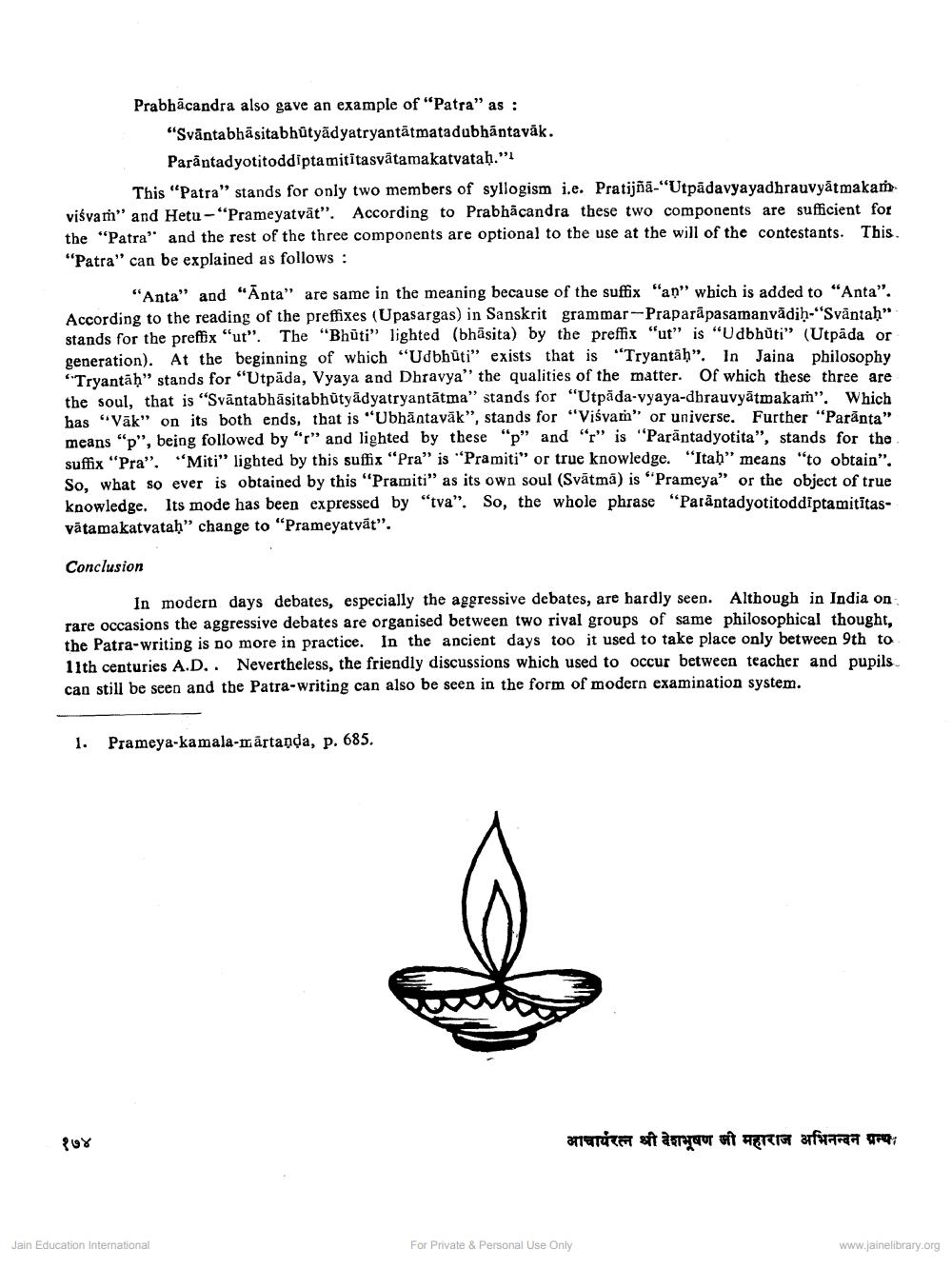________________
Prabhācandra also gave an example of "Patra" as:
"Sväntabhasitabhûtyädyatryantätmatadubhäntavak.
Parantadyotitoddiptamititasvātamakatvatab."
This "Patra" stands for only two members of syllogism i.e. Pratijñā-"Utpadavyayadhrauvyātmakam viśvam" and Hetu-"Prameyatvāt". According to Prabhacandra these two components are sufficient for the "Patra" and the rest of the three components are optional to the use at the will of the contestants. This. "Patra" can be explained as follows:
"Anta" and "Anta" are same in the meaning because of the suffix "an" which is added to "Anta". According to the reading of the preffixes (Upasargas) in Sanskrit grammar-Praparapasamanvādiḥ-"Svāntaḥ" stands for the preffix "ut". The "Bhūti" lighted (bhäsita) by the preffix "ut" is "Udbhuti" (Utpada or generation). At the beginning of which "Udbhūti" exists that is "Tryantāḥ". In Jaina philosophy "Tryantāḥ" stands for "Utpada, Vyaya and Dhravya" the qualities of the matter. Of which these three are the soul, that is "Svantabhasitabhutyadyatryantātma" stands for "Utpada-vyaya-dhrauvyatmakam". Which has "Vak" on its both ends, that is "Ubhantavak", stands for "Viśvam" or universe. Further "Paranta" means "p", being followed by "r" and lighted by these "p" and "r" is "Parantadyotita", stands for the suffix "Pra". "Miti" lighted by this suffix "Pra" is "Pramiti" or true knowledge. "Itaḥ" means "to obtain". So, what so ever is obtained by this "Pramiti" as its own soul (Svätma) is "Prameya" or the object of true knowledge. Its mode has been expressed by "tva". So, the whole phrase "Parantadyotitoddiptamititasvätamakatvatab" change to "Prameyatvät".
Conclusion
In modern days debates, especially the aggressive debates, are hardly seen. Although in India on rare occasions the aggressive debates are organised between two rival groups of same philosophical thought, the Patra-writing is no more in practice. In the ancient days too it used to take place only between 9th to 11th centuries A.D.. Nevertheless, the friendly discussions which used to occur between teacher and pupils can still be seen and the Patra-writing can also be seen in the form of modern examination system.
1. Prameya-kamala-martanda, p. 685.
१७४
Jain Education International
आचार्यरत्न श्री देशभूषण जी महाराज अभिनन्दन ग्रन्थः
For Private & Personal Use Only
www.jainelibrary.org




